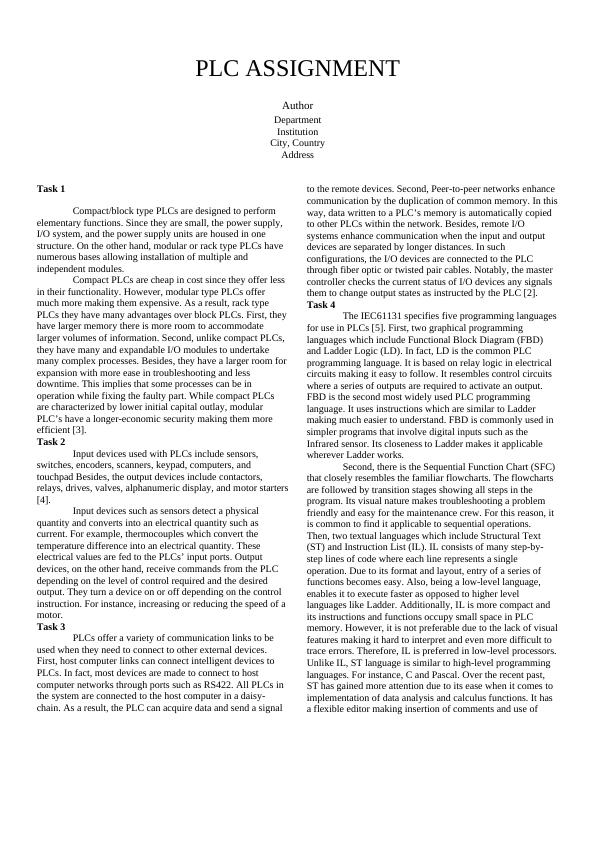PLC Assignment: Types, Input and Output Devices, Communication Links, Programming Languages, and Internal Architecture
Differentiate functions and find gradients at specific values of x. Find turning points and determine if they are maximum or minimum points. Calculate velocity, acceleration, and times of rest for a particle moving in a straight line. Determine the maximum value of emf. Find dimensions of a cylindrical drinks can with minimum surface area. Integrate functions and evaluate. Calculate the volume of a cone swept out by a line rotated about an axis. Explain the meaning of terms related to process sensors. Select sensors for different process variables and explain their construction, operation, and applications. Document measurement parameters for each sensor. Evaluate the suitability of sensors for specific applications. Explain the usefulness of signal conditioning in an industrial environment. List accepted standards for signal transmission.
Added on 2023-06-12
About This Document
PLC Assignment: Types, Input and Output Devices, Communication Links, Programming Languages, and Internal Architecture
Differentiate functions and find gradients at specific values of x. Find turning points and determine if they are maximum or minimum points. Calculate velocity, acceleration, and times of rest for a particle moving in a straight line. Determine the maximum value of emf. Find dimensions of a cylindrical drinks can with minimum surface area. Integrate functions and evaluate. Calculate the volume of a cone swept out by a line rotated about an axis. Explain the meaning of terms related to process sensors. Select sensors for different process variables and explain their construction, operation, and applications. Document measurement parameters for each sensor. Evaluate the suitability of sensors for specific applications. Explain the usefulness of signal conditioning in an industrial environment. List accepted standards for signal transmission.
Added on 2023-06-12
End of preview
Want to access all the pages? Upload your documents or become a member.

